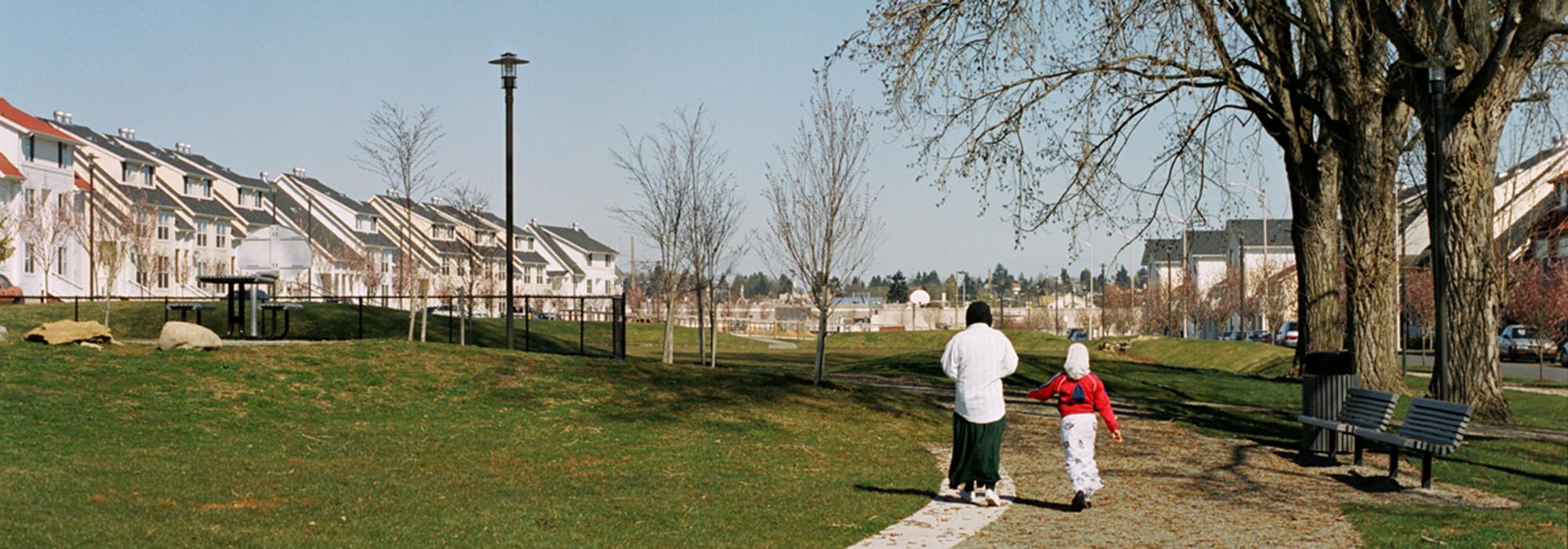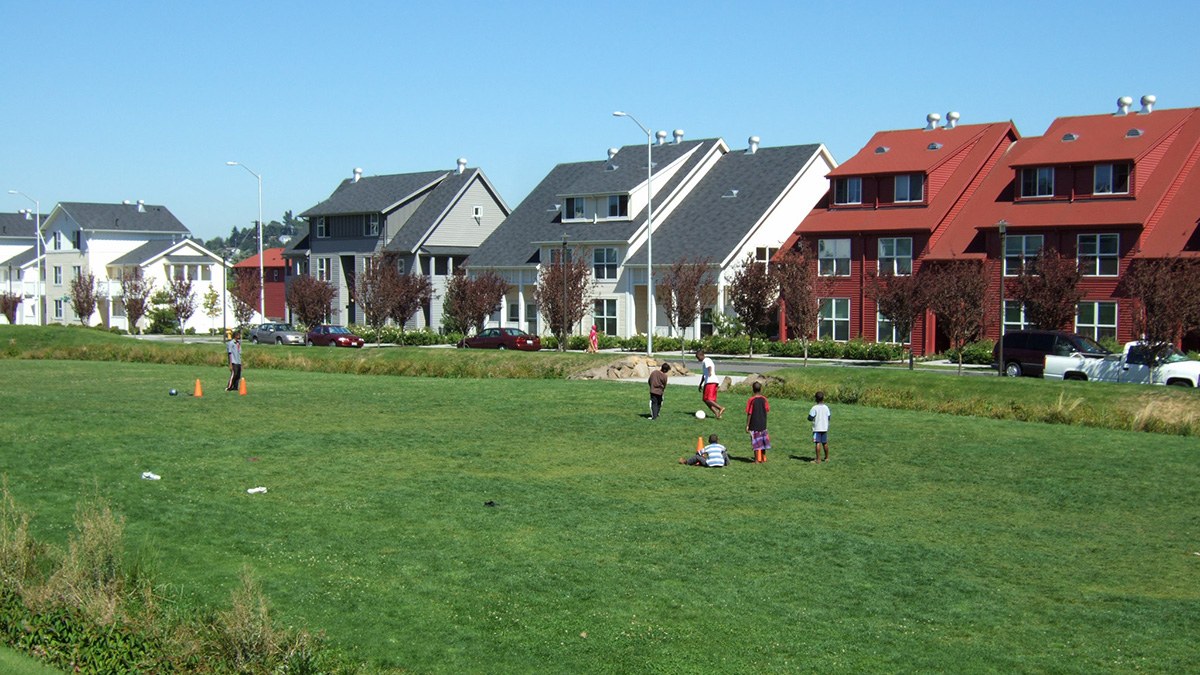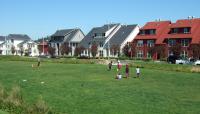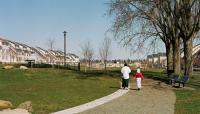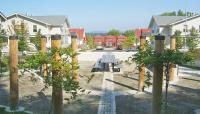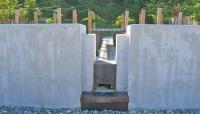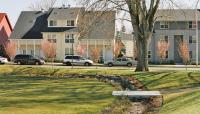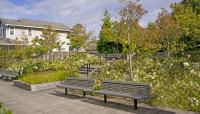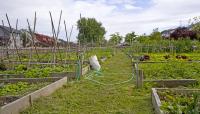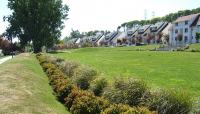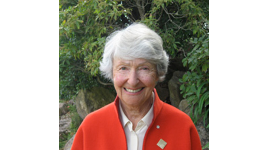Landscape Information
Originally known as Holly Park, this 102-acre residential community located in the Beacon Hill neighborhood was built for defense workers and completed in 1942 by architects John Paul Jones, Frederick Ahlson, and Paul Thiry. A landscape plan by Butler Sturtevant went unrealized, and the complex was converted into public housing in 1958, after which time it gradually fell into disrepair. From 1997 to 2006, the Seattle Port Authority redeveloped and expanded the renamed NewHolly community in three phrases, replacing all original structures with some 1,400 units of mixed-income housing, the first new neighborhood built in the city in 50 years. A key feature of the project was the landscape design by the firm Nakano Associates that produced the suburb’s tree-lined streets, as well as its system of parks and playgrounds. The 5.8-acre John C. Little Park, completed during phase two, includes a play area, plaza, and picnic shelters. Scattered throughout the neighborhood, remnant open spaces were converted into pocket parks and community gardens. The community is divided by the 3.6-mile Chief Sealth Trail, that runs along the Seattle City Light transmission right-of-way.
In 2000 Nakano Associates, in collaboration with Cornelia Hahn Oberlander, designed the final phase. The project consisted of hundreds of architecturally unified homes situated on 36 wooded acres, all laid out within walking distance of communal spaces and public amenities, including an educational center, a public library, and local businesses. The centerpiece of the planned community is Oberlander’s 2.3-acre Central Park, an arcing green comprising a main lawn surrounded by a vegetated bioswale and bookended by a playground and community garden, with an adjacent market space. Oberlander also designed three distinct pocket parks ranging from formal to naturalistic designs (38th Street Park, Austin Park, and Holden Park) to provide additional community gathering spaces and to combat adverse drainage impacts from the heavily wooded slope along the development’s western edge.



